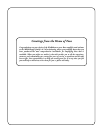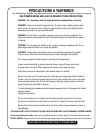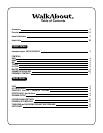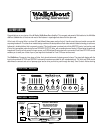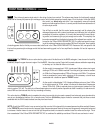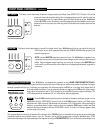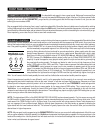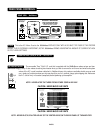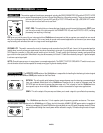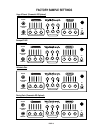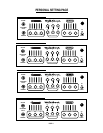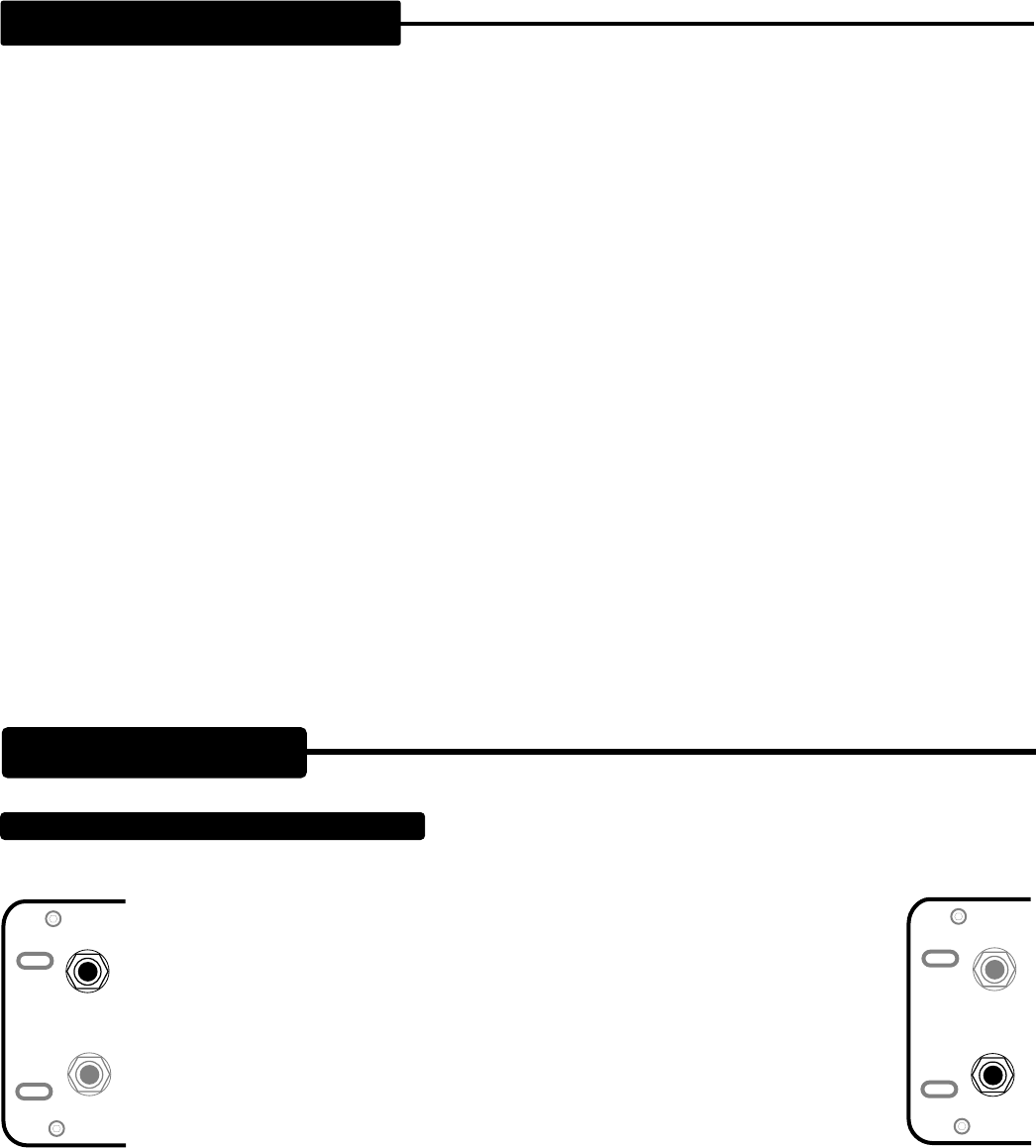
PAGE 3
HELPFUL HINTS:
(Continued)
and boost these frequencies when the control is set above 12:00. The MID works like a normal passive control and boosts a broad
band of frequencies as it is increased.
5. When using the Parametric EQ keep in mind that cutting (notching) undesirable frequencies is often preferable to boost-
ing desirable ones. By using this technique you will keep noise to a minimum and ensure ample headroom at all times. The Paramet-
ric is a powerful tone shaping tool when used tastefully, but all too often they are abused and set to their extremes which can result in
an unbalanced tone that is “full of holes” or excessive noise.
6. When using Outboard Signal Processors, the best results are usually found by inserting them into the Effects Loop which provides
a patch point between the preamp and the power section of your
WalkAbout
. The processors’ Input should be connected to the
SEND jack and its Output should be connected to the RETURN jack. Always use the shortest length possible (1-3 feet) of good quality
low capacitance cable to preserve the integrity of your sound.
7. The DIRECT OUTPUT circuit provides a GROUND LIFT that disconnects chassis ground from circuit ground. Should you encoun-
ter a hum or buzz when interfacing to live or recording consoles, try flipping this ground lift after you have muted that channels’ input
or zero’ed the fader. Many times (but not all) the hum is created by a ground loop between the
WalkAbout
and the console and lifting
the
WalkAbout
chassis to circuit ground will remedy the situation.
Hopefully these hints have helped get you up and running with your new
WalkAbout
and you are well on your way to having the best
tone you have ever heard! Now that you have a better idea of the layout and features, we are ready to move on to understanding the
individual controls and circuits in more detail.
FRONT PANEL:
INSTRUMENT INPUTS: ACTIVE / PASSIVE
These are the Instrument Input jacks and between them you can match the
signal output level of virtually any instrument.
The ACTIVE Input is padded down for greater input stage headroom and this works well
with basses that use an on-board pre-amp with an active tone control circuit. Usually these
instruments put out a much hotter signal than conventional basses, even when their tone
controls are set “flat”. The added headroom is needed to prevent clipping in the first stage
of the pre-amp and the ACTIVE Input should be used whenever instruments that utilize
active style pickup/EQ harnesses are used.
You can use the ACTIVE Input for conventional passive instruments also, for heavy handed
players needing extra headroom or simply a “cleaner” sound. However, note that unless
you have Kong size hands it may be difficult to bring the amplifier to full power with this
reduced front end sensitivity.
The PASSIVE Input is set up for more conventional basses with passive pickups that produce lower output signal levels. This jack is
more sensitive than the ACTIVE Input and therefore can drive the first stage to clip with a much lower signal. Keep this in mind if you
play with a heavy touch or want a little bit of growl or front end clip. In those scenarios this jack can be quite useful to push the first
stage of the pre-amp.
INSTRUMENT
INPUTS
PASSIVE
ACTIVE
INSTRUMENT
INPUTS
PASSIVE
ACTIVE




